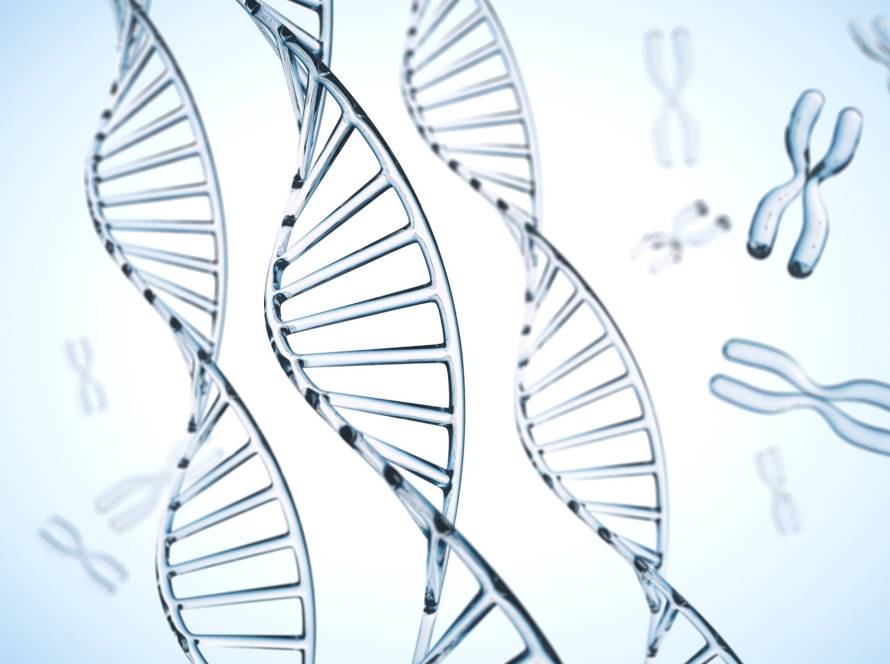Research shows NAD+ levels drop as we age. This makes the comparison of NMNH vs NMN more relevant for people who want to support their cellular health. The natural decrease in NAD+ has gotten scientists excited about compounds that could help maintain healthy levels of this significant molecule.
We will get into the science behind both compounds and learn about how they work differently. The evidence will help us decide which NAD+ precursor might work best to meet our health goals.
Understanding NMN: the established NAD+ booster
Nicotinamide mononucleotide (NMN) is one of the most studied NAD+ precursors, backed by solid scientific evidence that proves it works. We can find this nucleotide naturally in small amounts in foods like avocados, broccoli, cabbage, edamame and cucumbers.
How NMN works in the body
NMN acts as a direct precursor to NAD+, a vital coenzyme that powers many metabolic reactions in every cell. Our body absorbs NMN faster and converts it to NAD+ through specific pathways.
Scientists used to think NMN needed conversion to nicotinamide riboside (NR) before entering cells. They found that there was a dedicated NMN transporter called Slc12a8 that allows cells to absorb NMN directly. This transporter shows up in the small intestine approximately 100-fold higher than in brain or adipose tissue, which suggests it gets absorbed efficiently through the digestive system.
Cells need just one step to convert NMN into NAD+, making it quicker than other precursors. The enzyme nicotinamide mononucleotide adenylyltransferase (NMNAT) helps complete this final change.
Clinical evidence and dosage ranges
Human clinical trials have shown NMN’s safety at different doses. The first human safety study from Keio University in 2016 showed that single oral doses of 100, 250 and 500 mg worked well without side effects. Later studies proved it stayed safe at higher doses, up to 1,200 mg daily in athletes and 2,000 mg in specialized formulations.
NMN gets absorbed incredibly well. Blood plasma NMN levels shoot up within 2.5 minutes after taking it orally, which points to quick intestinal uptake. Blood NAD+ levels typically rise based on the dose, with 600 mg daily showing the best results in several trials.
Benefits observed in human trials
Clinical studies reveal several benefits from taking NMN supplements. Postmenopausal women with prediabetes saw their skeletal muscle insulin sensitivity increase by about 25% after taking 250 mg daily for 10 weeks.
NMN shows great results for physical performance. A randomized controlled trial found that taking 300-900 mg daily helped people walk farther in the six-minute walking test compared to placebo.
The research suggests NMN might help heart health by reducing arterial stiffness, especially if we have higher BMI or blood glucose levels. Some studies point to benefits for older men’s hearing and helping preserve telomere length.
Scientists continue to study NMN in humans and the growing research shows it’s a reliable NAD+ booster with proven benefits and safety.
Exploring NMNH: the next-generation compound
Dihydronicotinamide mononucleotide (NMNH) stands out as a breakthrough advancement over traditional NAD+ precursors. It has unique properties that set it apart from its oxidized counterpart NMN.
What makes NMNH chemically unique
NMNH is NMN with an extra hydrogen atom at position 4 on the pyridine ring. This creates a reduced form of the molecule. This small change substantially alters its biological behavior. Scientists have created chemical synthesis methods that use thiourea dioxide (TDO) as a reducing agent to produce NMNH efficiently. NMNH shows remarkable stability with a half-life of approximately 2.4 days at pH 7.0 and room temperature.
NMNH’s effect on NADH and reductive stress
Research shows NMNH’s exceptional power to boost NAD+ levels up to 5-fold compared to untreated cells and almost 5-fold versus NMN-treated cells. NMNH works faster than NMN and reaches peak levels within 6 hours. These elevated levels stay high for 24 hours. NMNH also boosts cellular NADH levels 2.5-fold higher than both untreated and NMN-treated cells. Mouse liver tests showed that NMNH increased NADH levels by nearly 10-fold based on dosage. This NADH buildup creates cellular reductive stress that leads to more reactive oxygen species production.
Suppression of glycolysis and TCA cycle
Metabolomic analysis shows that NMNH treatment lowers glycolysis intermediates. These include fructose-1,6-diphosphate, DHAP, 3PG/2PG, PEP and pyruvate. NMNH also decreases TCA cycle intermediates like citrate, cis-aconitate, isocitrate, succinate and malate. NMNH-generated NADH accumulation directly causes these metabolic suppressions.
Potential for anti-cancer and metabolic regulation
NMNH shows promising anti-proliferative effects. It stops cell growth at concentrations above 250 μM in liver cancer cells. Different cells react differently, renal cancer cells respond at just 50 μM. Normal kidney cells need 250 μM to stop growing. NMNH could be useful in cancer treatment and metabolic regulation because it causes cell cycle arrest. Tests also show that NMNH reduced damage and helped renal tubular epithelial cells heal better after hypoxia/reoxygenation injury.
NMNH vs NMN supplement comparison
The chemical makeup of NMN and NMNH creates fundamental differences in how these supplements work in the body. These differences affect everything from how cells absorb them to their clinical results.
Absorption and transport mechanisms
The absorption pathways show clear differences between these compounds. Cells cannot directly absorb NMN. Research shows it needs to change into nicotinamide riboside (NR) through an extracellular receptor called CD73. The converted NR then moves into cells through equilibrative nucleoside transporters (ENTs). Once inside, it changes back to NMN through the NRK pathway.
NMNH follows a different path. It must transform into dihydronicotinamide riboside (DNR) outside the cell before entry. After entering, it follows the same NAD pathway as DNR. Some researchers suggested a specific NMN transporter (Slc12a8) exists, but scientists still debate this finding.
Stability and degradation resistance
Standard NMN has proven stability characteristics as a supplement. NMNH, on the other hand, has been tough to work with commercially because it oxidizes easily. This instability held back NMNH supplement development until stabilized crystalline forms emerged.
NMNH vs NMN supplement difference in outcomes
Lab tests reveal a significant performance gap between these compounds. NMNH boosts NAD+ levels more quickly and reaches about twice the concentration of NMN. Tests on mice showed NMNH rapidly increased NAD+ across multiple tissues, kidney, liver, muscle, brain, brown adipose tissue and heart.
Lab studies suggest NMNH could be 5-10 times more effective. However, the first human trial showed a more modest result, a threefold increase in NAD+ levels over 90 days.
Safety data and known side effects
Both supplements show good safety profiles. Clinical studies found people tolerated NMN well at doses up to 900 mg daily with no safety concerns. Some NMN studies noted minor blood changes, including lower hemoglobin (-0.4%), hematocrit (-2%) and platelet count (-20,000/μL)2.
NMNH looks promising in early studies, but human safety data remains limited. Users of both compounds sometimes report mild side effects like nausea, headaches and drowsiness.
Choosing the right NAD+ precursor for longevity
NAD+ precursors need careful thought based on our situation and the available science. We can’t pick between NMN and NMNH with a one-size-fits-all approach. Several factors come into play.
Factors to think about: goals, age, health status
Our health objectives should guide our choice of NAD+ precursor. If we want proven benefits backed by research, NMN makes a solid choice. We might want to try NMNH if we’re open to newer options, though it has fewer human studies.
Our age matters a lot in this decision. NAD+ levels drop as we get older and affect how cells work throughout our body. Older adults often need stronger precursors because their NAD+ production becomes less efficient.
Our health condition also shapes this choice. People with heart problems should know that NAD+ production enzymes in the amidated pathway (which handles NMN) make up 99.3% of cardiac NAD+ stores. This makes NMN potentially better for heart health.
When to prefer NMN over NMNH
NMN becomes the better choice in several situations. People who want proven supplements should know that NMN has gone through many human clinical trials that show it’s both safe and effective.
NMN stays stable longer on the shelf than NMNH. It also helps more with gut health, as shown by extensive research.
Rules and regulations affect where we can get these supplements. NMN faces US market restrictions since 2022, but we can still find it easily in Asia and Europe.
When NMNH might be more effective
NMNH works better in certain cases. It raises NAD+ levels faster and shows about twofold higher NAD+ increases in early research.
NMNH could help with metabolic issues through its unique effects on cell metabolism. It slows down glycolysis and the TCA cycle, which might help specific metabolic conditions.
Cancer-related concerns might make NMNH more appealing because it shows promise in controlling cell growth1.
Nicotinamide riboside vs NMN vs NMNH: a brief note
Nicotinamide riboside (NR) gives us another option with its own features. NR needs extra steps, it must become NMN through NR kinases before turning into NAD+. Each person absorbs NR differently.
Research shows some downsides to NR. One study found that rats taking it had 35% less physical endurance. NR also doesn’t raise NAD+ levels in muscle tissue as well as reduced forms do.
NMNH leads the pack in raising NAD+ levels, followed by NMN. NR typically shows weaker effects across different tissues.
Whatever precursor we select, both compounds are powerful tools that support cellular health as NAD+ levels naturally decline with age. Research in this field continues to grow and will without doubt improve our understanding of these molecules and their best uses. Our personal health goals, age factors and existing medical conditions should guide our choice between NMNH and NMN for NAD+ enhancement.


